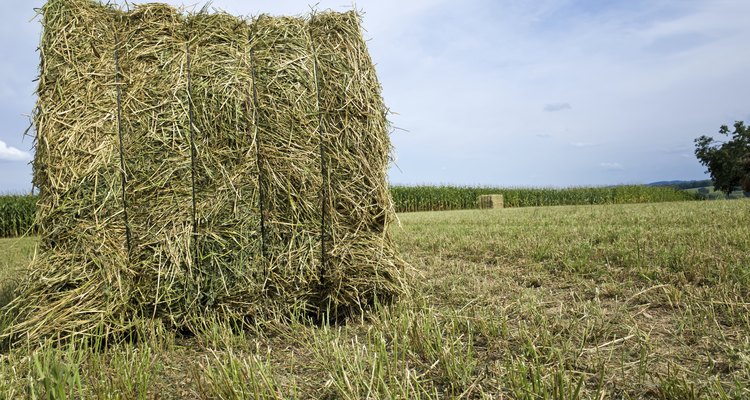
McKinneMike/iStock/Getty Images
Alfalfa is a perennial legume prized by livestock producers for its high nutrient content. Grown around the world, alfalfa hay is used to feed a variety of livestock including cows, horses, sheep and goats, and a properly managed alfalfa stand can produce quality hay for more than five years.
History
Alfalfa hay has a long history and its geographical establishment has followed the route of armies and explorers. The Persians introduced alfalfa to Greece in 490 B.C. when they planted the crop to provide food for the Persian army’s horses and cattle. Alfalfa spread to Italy by the first century A.D., and the writers Virgil and Pliny documented instructions on managing alfalfa crops. Alfalfa was established in Spain by the eighth century A.D., probably during a Moorish invasion. The Spaniards carried the crop to North and South America during their sixteenth century explorations.
Uses
Alfalfa has a variety of uses as a nutritious food for livestock. The Government of Manitoba states that alfalfa provides an effective foraging crop during the growing season. It is also cut and used in round or square hay bales to feed livestock during the winter. Alfalfa is included in livestock feed such as silage, cubes and meal.
Nutrition
Livestock producers need hay that provides high protein, energy and mineral values while delivering low fiber content to ensure quick nutrient absorption by the animal. According to the University of Nevada Cooperative Extension, alfalfa hay for dairy cattle provides an average crude protein level of 18 percent with a fiber level of 23 percent. Alfalfa grown for beef cattle provides 15 percent crude protein and 28 percent fiber. This compares to an average crude protein level of 10 percent and fiber level of 31 percent from other fertilized grasses. Alfalfa provides key nutrients such as calcium, magnesium and potassium. Depending on the nutrient levels in the pasture where the crop was grown, alfalfa hay can provide high levels of vitamins A, D, E and K; selenium; and riboflavin and niacin.
Harvesting
Hay must be harvested at specific times to maximize its nutrient content and moisture levels, which affects the hay’s palatability. The University of Missouri Extension recommends harvesting alfalfa hay pastures based on flower emergence. For established alfalfa fields, take the first two cuttings in May and June when flowers are well past the bud stage and beginning to bloom. If weather conditions allow, take two more cuttings at 35-day intervals during the growing season. For first-year alfalfa hay stands, wait until the plant’s flowers reach the mid- to full-bloom stage to take the first harvest, and wait until flowers appear to make subsequent cuttings.
Warnings
The Government of Alberta notes that alfalfa hay can cause bloat in livestock. Bloat occurs when an animal’s feed causes it to produce more gas in the digestive tract than it can expel. Too much gas can inhibit the digestive process and in extreme cases, cause death. To avoid bloat, introduce animals to alfalfa hay slowly, and limit the amount of grain rations in the diet to about 35 percent.
Related Articles

Staple Foods in Africa

The Mayan Diet

Benefits of GMO Foods

Hydroponic Vegetable Nutrients Vs. ...

List of Wild Edible Plants & Berries in ...
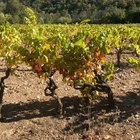
How to Grow Wine Grapes in Virginia

Do Filet Mignon Steaks Come From Female ...

The Effects of Organic Fertilizer on ...
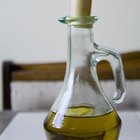
Organic Vs. Conventional Olive Oil
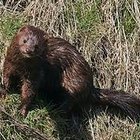
What Is Sheared Mink?

Farm-to-Table Concept

Maine Wild Edible Plants

How to Choose Quality Korean Ginseng
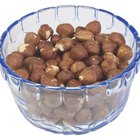
What Kinds of Nuts Don't Grow on Trees?

How to Roast an Eye Round Roast at High ...
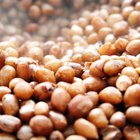
Why Do Cashews Cost More Than Peanuts?

Tanqueray Gin Ingredients
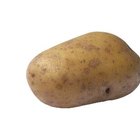
The Times to Plant and Harvest Yukon ...

History of African Peanut Soup

Government Grants for Churches
References
Resources
Photo Credits
McKinneMike/iStock/Getty Images